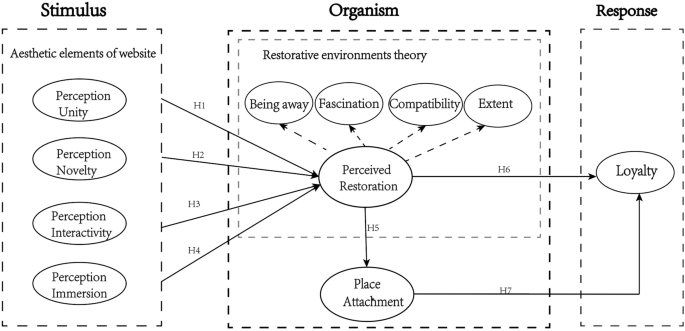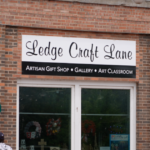
The Chinese generation Z and digital technology
Generation Z, a term originated in the United States and Europe, refers to the cohort born between 1995 and 2010 (Seemiller and Grace, 2018). This generation is often characterized as ‘digital natives,’ a demographic that has grown up with ubiquitous access to the internet, smartphones, and a variety of digital applications, thereby integrating digital technology seamlessly into their daily lives and social interactions. In China, the Generation Z population is estimated at approximately 264 million, representing less than 20% of the total population, yet accounting for an impressive 40% of consumer spending (Yu et al. 2023). This group is distinguished by its strong sense of economic independence, distinctive personal identity, high self-esteem, a preference for experiential consumption, and unique consumption patterns (Stylos et al. 2021). Furthermore, Generation Z heavily relies on digital platforms for information acquisition, social interaction, and self-expression (Shin Seung et al. 2021).
However, the COVID-19 pandemic has subjected this cohort to unprecedented stress and challenges. Reports by the American Psychological Association (APA) indicate that approximately 81% of Generation Z respondents have experienced an increase in mental health issues during the pandemic, a figure significantly higher than reported among older age groups (Becker, 2021; Liu et al. 2021). This disparity highlights the unique psychological struggles faced by this generation. Pandemic-induced social isolation further exacerbated their reliance on digital platforms as the primary means of maintaining contact and emotional support. Recent studies show that nearly 70% of Generation Z internet users in China spend over 10 h online daily (Clements, 2020), turning to digital technology as a refuge. They utilize social media for staying connected, online learning platforms for education, and digital entertainment as an escape from the pressures of reality.
Given this backdrop, the potential of aesthetically pleasing online digital art exhibitions to alleviate mental health issues among Generation Z users emerges as a key research question. Online art exhibitions, typically rich in interactivity and visual appeal, align with the interests and consumption habits of Generation Z. Their accessibility and low entry barriers make them particularly attractive to young individuals less likely to visit traditional art institutions. In digital environments, website aesthetics initially create a visually pleasing impression for viewers (Tuch et al. 2012). Empirical studies in human-computer interaction have underscored the significance of website aesthetics (Jiang et al. 2016). Therefore, in this study, we aim to investigate the environmental setup of online digital art exhibitions and the viewing responses of Generation Z users through the lens of website aesthetics.
Online digital art exhibition
New media art, inspired by and employing practices from non-artistic disciplines, represents an interdisciplinary paradigm in the art world (Ahmedien, 2022). This genre encompasses art created using computer-generated imagery, virtual reality (VR), augmented reality (AR), and 3D printing technologies. Online digital art exhibitions, serving as platforms for showcasing digital media art, refer to art works and exhibits displayed over the internet. These exhibitions can include virtual galleries, interactive art installations, and digitized traditional artworks. A defining characteristic of online digital exhibitions is their accessibility and global reach, allowing audiences to experience artworks from around the world without physical presence (Paul, 2015).
The mode of exhibition in online digital art showcases a significant departure from traditional online art exhibitions, which primarily rely on static images or videos. By utilizing advanced technologies like VR, AR, and 3D modeling, online digital art exhibitions offer a more dynamic and interactive art experience. The application of these technologies not only enhances the expressiveness of the artworks but also provides an immersive sensory experience for the audience, transcending the limitations of physical space (Dixon, 2015). This enables a deeper understanding and appreciation of the art’s essence and emotions, conveying the soothing power of art.
The emergence of online digital art exhibitions marks a significant transformation in artistic representation. As a revolutionary form of expression, new media art has redefined the role of art in facilitating psychological healing (Simanowski, 2011). This form of art, integrating advanced technology with traditional artistic creation, produces works that directly engage the audience’s emotions and psyche. Presented herein are illustrative cases (Table 1) demonstrating the efficacy of online digital art exhibitions in facilitating psychological healing.
Online digital art exhibitions, through their boundaryless characteristics, interactivity, diversity, and technological integration, have introduced novel prospects for psychological healing. These exhibitions not only contribute to the democratization and accessibility of art but also furnish individuals with a platform for self-exploration, expression, and therapeutic engagement.
S-O-R framework theory
The Stimulus-Organism-Response (S-O-R) theoretical framework, originally introduced by Mehrabian and Russell (1974), emerged as an approach within environmental psychology. It posits that environmental cues influence individuals’ cognitive or emotional responses, subsequently impacting their consumption behavior. Evangelista and Al (1984) further elaborate on the S-O-R system in the context of consumer behavior, where the stimulus (S) encompasses ‘external entities,’ comprising marketing mix variables and other environmental inputs. Organism (O) variables encompass ‘internal processes and structures within individuals bridging between stimuli and ultimate behavioral responses,’ comprising perceptual, psychological, and cognitive activities, specifically referring to human emotions and cognitions. Response (R) refers to the resultant outcomes or consumer reactions, including psychological responses such as attitudes or behavioral responses.
Previous research has applied the S-O-R theory across diverse domains to elucidate user behavioral responses following external stimuli. In the realm of online shopping, Wang et al. (2011) explored the perceived service quality, satisfaction, and how these psychological changes, from the perspective of web aesthetics, subsequently influence online consumer behavioral intentions. In the context of tourism, Zhu et al. (2020) investigated the impact of online travel video blogs on prospective travelers. In the service sector, Ryu and Jang (2007) delved into the influence of themed restaurant spatial environments on customer emotions and repeat visit intentions, among others, effectively elucidating user responses following external stimuli.
Our research framework aims to investigate consumer responses to web aesthetics at different levels. We endeavor to explore how two dimensions of web aesthetics affect emotional changes (dominance, arousal, and pleasure) among online consumers and how these psychological changes, in turn, influence consumers’ online behaviors such as searching and purchasing on other websites. Consequently, we adopt the S-O-R framework to comprehend the relationships among web aesthetics, emotional models, other website search behavior, and purchasing behavior among consumers. We examine consumer responses to web aesthetics at different levels, seeking to understand how two dimensions of web aesthetics influence emotional changes among online consumers.
In essence, online digital exhibitions are fundamentally rooted in the S-O-R theoretical mechanism. However, there is a dearth of research specifically focused on online digital exhibitions, and their applications remain underexplored. We employ a research framework to investigate the psychological and emotional responses of Generation Z users to online digital exhibition aesthetics, and whether these responses facilitate the alleviation of psychological issues within this demographic. We utilize the S-O-R framework to comprehend the relationships among website aesthetics, perceived therapeutic benefits, place attachment, and loyalty.
Web aesthetics
The term ‘aesthetics’ originates from the Greek word ‘AIRHHTIKH,’ denoting the sensory experiences individuals derive from their senses (Greek: ‘AIRHHREIR’) (Lorenzo-Romero et al. 2013). Schenkman and Jönsson (2000) commonly assert that aesthetic experiences can evoke emotional responses. Website aesthetics, on the other hand, emphasize the visual appeal of website design, primarily encompassing two dimensions: aesthetic form and aesthetic attractiveness.
In this study, the focus lies on users’ overall aesthetic experience perception of online digital exhibitions within the realm of web aesthetics. Current digital art exhibitions employ human-computer interaction media technology, and the audience’s perceptual experience constitutes a significant characteristic, generating multidimensional and dynamic aesthetic experiences. With the development of digital technology, from touch-based interaction forms to interface-based interaction experiences, and further to multimodal immersive interaction devices, individuals’ aesthetic standards and expectations continue to rise. Starting from interface interactions, the audience’s contributions to digital technology will further establish their position in the integrity of artworks. Interface aesthetics design also provides possibilities for an immersive experience for the audience (Udsen and Jørgensen, 2005) and has gained increasing attention in the field of human-computer interaction. The amount of time users spend on a website is significantly influenced by the aesthetic design of the website (Ramezani Nia and Shokouhyar, 2020). Currently, web aesthetics are employed in online shopping environments to create aesthetically pleasing effects, which positively influence customers’ purchasing behavior (Wang et al. 2011). Web aesthetics can evoke emotional changes in customers, generating a sense of attachment to the website (Chang et al. 2014). Therefore, web aesthetics are considered an essential factor in assessing online service quality (Sathiyavany and Shivany, 2018). Given that online digital art exhibitions also focus on users’ perceived experience, the effectiveness of web aesthetics becomes particularly crucial.
While aesthetics is commonly recognized as an important aspect of website design, the emphasis on user experience has primarily been concentrated within the research domain of information systems, focusing on website functionality and marginalizing other factors of web aesthetics, often tending toward functional design. This may be attributed to the evaluation of website design problems traditionally being conducted within the paradigm of information technology (Masoudi et al. 2015). Furthermore, the measurement of web aesthetics design has received limited research attention to date. Although Schenkman and Jönsson (2000) identified two dimensions of web aesthetics—formal aesthetics and hedonic aesthetics—and Lavie and Tractinsky (2004) suggested dimensions to assess visual aesthetics, namely classical aesthetics and expressive aesthetics, the conceptual definitions and components of these dimensions remain somewhat elusive. Therefore, the determinants of aesthetics remain an ambiguous and unresolved issue. In fact, (Packard and Berlyne, 1975) made a significant contribution to aesthetics research by proposing a set of aesthetic principles governing people’s preferences. The level of aesthetic preference depends on the arousal potential of the stimulus, which, in turn, is determined by characteristics such as novelty, complexity, and incongruity (Martindale et al. 1990). Deng and Poole (2010), drawing on literature from environmental aesthetics, human-computer interaction, and psychology, identified visual complexity and order as two salient features influencing users’ aesthetic preferences for web pages. Beardsley (1998) proposed that aesthetic design is influenced by unity, complexity, and intensity. Jiang et al. (2016) added that novelty and interactivity may also be essential design elements of web aesthetics. Additionally, Jiang et al. (2016) argued that users’ perceived quality of five design elements-unity, complexity, intensity, novelty, and interactivity—acts as determinants of web aesthetics.
Hence, considering the comprehensive discourse above, the evaluation of web aesthetics can be approached by considering design elements. In this study, focusing on the web aesthetics of online digital art exhibitions, the primary emphasis is on users’ perception of the overall aesthetic experience of such exhibitions (Paul, 2015). Paul (2015) asserted that digital art exhibitions exhibit characteristics of “interactivity,” “mixed senses,” and “cross-media.” Given the characteristics of the Z generation, their iterative aesthetic levels, and their emotional experiential needs, this study identifies four main design elements of web aesthetics in online digital art exhibitions: perceptual unity, perceptual novelty, perceptual interactivity, and perceptual immersion.
Perceptual unity refers to users’ perception of visual balance, layout of text and images, and color schemes in online digital exhibitions, which create a sense of consistency and comfort. Past research has indicated that unified design significantly influences individuals’ aesthetic perception. When website design presents a cohesive visual effect, users consider it the most pleasing aesthetic display (Sonderegger and Sauer, 2010). Therefore, it can be argued that design unity is a crucial determinant of web aesthetics.
Perceptual novelty pertains to users’ perception of the displayed content in online digital exhibitions as innovative and stimulating. Previous research has demonstrated that novelty plays a significant role in users’ first impressions of website design (Kim, 2019) and is one of the determinants of aesthetics in the initial interaction between users and websites (Jiang et al. 2016). Consequently, this study also regards novelty as an important determinant of web aesthetics.
Perceptual interactivity refers to users’ interaction with the website interface, primarily through physical actions such as clicks, touches, motion capture, and wearable controllers, which generate immediate feedback through direct contact. This immersive interactive mode allows users to experience the aesthetic appeal of artworks by clicking on the screen and assuming the role of a “player.” In fact, some pioneering empirical studies have validated the relationship between interactivity and aesthetics (Hassenzahl, 2004). Parsons (2006) acknowledges the existence of the behavioral aspect of aesthetics, emphasizing that people perceive aesthetics through their operations and actions. Hence, interactivity is an important factor that should not be overlooked in web aesthetics.
Perceptual immersion refers to users’ state of complete involvement, loss of self-awareness, and high level of concentration, leading to a state of flow—an optimal cognitive experience (Agrawal et al. 2020). Some researchers consider immersion as the core of human-computer interaction, explaining users’ satisfaction with computer systems (Ghani and Deshpande, 1994). Novak et al. (2020) found that 47% of users had experienced immersive online environments on the Internet (Novak et al. 2020). Consequently, it is believed that users who are fully engaged in a visually appealing, entertaining, informative, or perceived useful website are more likely to experience a state of flow. Therefore, immersion is an essential factor that should not be overlooked in web aesthetics.
Restorative environment
Therefore, considering the aforementioned discourse, the evaluation of a restoration environment can be understood in terms of its design elements. In the context of online digital art exhibitions, the focus is primarily on users’ perception of the overall aesthetic experience (Paul, 2015). A restoration environment refers to an environment that helps individuals alleviate stress, negative emotions, psychological fatigue, and promotes psychological and physiological well-being (Ulrich, 1979; Ulrich, 1984). “Restoration” refers to the process of regaining depleted physiological, psychological, and social capacities while adapting to the external environment. In a restoration environment, individuals effectively regain their depleted capacities, experience deep restoration of their mind and body, restore direct attentional resources, and enhance reflection on significant mistakes (Kaplan, 1995). Kaplan and Kaplan (1995) propose four essential characteristics of a restoration environment: being away, fascination, extent, and compatibility. Furthermore, Hartig et al. (1997) have developed the Perceived Restorativeness Scale to assess the perceived restoration in environments. Previous research has applied the concept of a restoration environment to various domains such as nature (Zhao et al. 2020), healthcare (Abdelaal and Soebarto, 2019), and education (Kelz et al. 2013). However, its application in online virtual environments has been relatively limited. The restoration environment aligns well with the internet entertainment motivations of the Z generation, as the appreciation of exhibitions is considered an important way to alleviate psychological fatigue (Jeong and Lee, 2006). When individuals engage in artistic activities, they often seek restoration from the fatigue of daily life. The interactive, immersive, and aesthetically appealing environment of online exhibitions can provide a relaxed setting for young people of the Z generation, creating a significant contrast to their daily life circumstances and environment. Thus, online digital art exhibitions create an excellent restoration environment, and it is worth further investigation to determine if they have a positive impact on the psychological well-being of the Z generation.
In this study, the restoration environment explains the psychological healing effect of the online digital art environment on Z generation users. The present research defines this restoration environment-induced state of psychological well-being as perceived restoration. The four characteristics of a restoration environment proposed by Kaplan and Kaplan (1995) serve as the measurement dimensions of perceived restoration in this study.
“Being away” refers to the stimulation of a sense of distance among Z users within the digital art exhibition environment. It is a psychological distance that triggers the use of non-directed attention.
“Extent” pertains to Z users perceiving a sufficiently rich and complex content within the digital art exhibition environment. This richness allows Z users to perceive the place as an “other world,” enabling them to relax and escape from the stress and agitation of daily life and implies the restoration of directed attentional capabilities.
“Fascination” denotes the effortless ability of the digital art exhibition environment to capture and hold Z users’ attention. This fascination does not have negative effects, as Z users can freely contemplate and relax, allowing the remaining parts of the attentional system to restore. A highly fascinating environment is one that can attract individual attention for restoration.
“Compatibility” refers to the degree of alignment between the digital art exhibition environment and the personal needs, preferences, and goals of Z users. Even if an environment is highly fascinating, if it does not fulfill the needs and preferences of Z users, it is unlikely to have restoration benefits for them.
The relationship of web aesthetics and perceived restoration
Previous research has contributed to our understanding of the four attributes of perceived restoration, which aim to capture various negative emotions, reduce psychological fatigue, and promote psychological and physiological well-being. The four elements of website aesthetics (perceived unity, novelty, interactivity, and immersion) play a crucial role in the presentation of online digital exhibitions.
Existing studies have highlighted the significance of individuals’ aesthetic preferences as important determinants of perceived restoration potential (Wang et al. 2019). In the domain of tourism, the relationship between aesthetic appeal of tourist destinations and tourists’ perceived restoration has been explored (Kirillova and Lehto, 2016). Similarly, in healthcare environments, spatial aesthetics design is enhanced to alleviate stress and anxiety, improve patient satisfaction, and facilitate health and recovery (Schweitzer et al. 2004). Building upon these findings, it is hypothesized that superior aesthetic design in online digital art exhibitions can enhance the perceived restoration of attention among the Z generation, thereby leading to psychological healing effects. Therefore, the following hypotheses are proposed:
H1: There is a positive correlation between the perceived unity of online digital art exhibitions and perceived restoration among the Z generation.
H2: There is a positive correlation between the perceived novelty of online digital art exhibitions and perceived restoration among the Z generation.
H3: There is a positive correlation between the perceived interactivity of online digital art exhibitions and perceived restoration among the Z generation.
H4: There is a positive correlation between the perceived immersion of online digital art exhibitions and perceived restoration among the Z generation.
Place attachment
Place attachment, also known as “sense of place,” originates from attachment theory that describes the relationship between mother and infant (Bowlby, 1982). It refers to the emotional connection established between individuals and specific places (Altman and Low, 1992). The understanding of place attachment is abstracted through two dimensions: place dependence and place identity, which express the value of place attachment (Williams et al. 1992). Place dependence represents the special connection between individuals and a place, where the place meets the specific needs of the participants, indicating a functional attachment (Pretty et al. 2003). Place identity refers to the psychological and spiritual sense of identification and belongingness to a place, representing the emotional attachment between individuals and the physical environment of the place (Wang et al. 2022). In this study, place attachment refers to the attachment of the Z generation young people to online digital art exhibitions, focusing on the discussion of the place dependence established between the Z generation and online digital art exhibitions, as place dependence better reflects the emotional connection of online users.
Previous research has demonstrated the positive relationship between place attachment and therapeutic environments, with place attachment being the strongest predictor of perceived restoration (Ratcliffe and Korpela, 2016; Shen et al. 2022). It has been confirmed that tourists’ perception of restoration significantly influences their place attachment to agritourism destinations (Dargie, 2020). If individuals have positive emotional attachment to a place, including preferences and familiarity, the place of attachment also holds healing potential. Based on this, we hypothesize:
H5: Perceived restoration has a positive impact on place attachment to online digital art exhibitions among the Z generation.
Loyalty
Oliver (1999) defined loyalty as “a deeply held commitment to rebuy or repatronize a preferred product or service consistently in the future, thereby causing repetitive same-brand or same-brand-set purchasing, despite situational influences and marketing efforts having the potential to cause switching behavior.” This definition divides loyalty into two distinct levels: behavioral loyalty and attitudinal loyalty. Behavioral loyalty refers to customers’ repurchase intention and positive word-of-mouth and referral intention. Attitudinal loyalty, similar to the emotional or attitudinal loyalty proposed by Oliver (1999), represents customers’ higher-order or long-term commitment to an organization, which cannot be inferred solely through observing repeat purchase behavior. In this study, loyalty refers to the intention of the Z generation young people to continue visiting similar online digital art exhibitions. The study primarily examines the behavioral loyalty of Z-generation users. Bennett and Rundle-Thiele (2002) suggested that behavioral loyalty is an observable outcome of attitudinal loyalty. Repeat purchase or viewing is one of the observable indicators of loyalty, whereas attitudinal loyalty is difficult to observe (Bennett and Rundle-Thiele, 2002).
Previous research has shown that perceived healing environments have a significant impact on health, which, in turn, influences loyalty (Kim et al. 2014; Chebat and Slusarczyk, 2005; Hernández-Mogollón et al. 2020). Perceived restoration is an important aspect of the health experience, contributing to positive emotions, life satisfaction, and determining individuals’ loyalty and intention to revisit (Collado and Staats 2016). Natural soundscapes in the context of the global COVID-19 pandemic have reduced visitors’ mental fatigue and enhanced their loyalty (Qiu and Zhang, 2021). Moreover, researchers have also focused on the role of third places (e.g., cafes, museums) in reducing mental fatigue and increasing visitor loyalty to those locations, in addition to natural restoration (Rosenbaum, 2009). Therefore, we propose the following hypothesis:
H6: Perceived restoration has a positive impact on loyalty to online digital art exhibitions among the Z generation.
Additionally, previous studies have confirmed the relationship between place attachment and user loyalty (Su et al. 2011). Zhang et al. (2021) demonstrated that place attachment has the strongest impact on visitor loyalty. Lee et al. (2012) discovered that visitors develop a moderate level of emotional attachment to the host destination during festivals, ultimately leading to loyalty to that destination. Based on these findings, we can hypothesize:
H7: Place attachment has a positive effect on loyalty to online digital art exhibitions among the Z generation.
Research model
Building upon the theoretical literature mentioned above, this study posits causal relationships among the dimensions of web aesthetic design elements, place attachment, perceived restoration, and user loyalty to online digital art exhibitions. Thus, the aim of this study is to explore their interrelationships and develop a new S-O-R model, as illustrated in the Fig. 1. In this model, Stimulus (S) comprises the web aesthetic design elements of online digital art exhibitions, Organism (O) refers to the perceived restoration psychological state and place attachment of the Z generation. Response (R) encompasses the loyalty responses of the Z generation towards online digital art exhibitions, including psychological reactions such as attitudes or behavioral responses.












